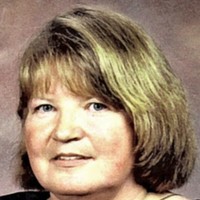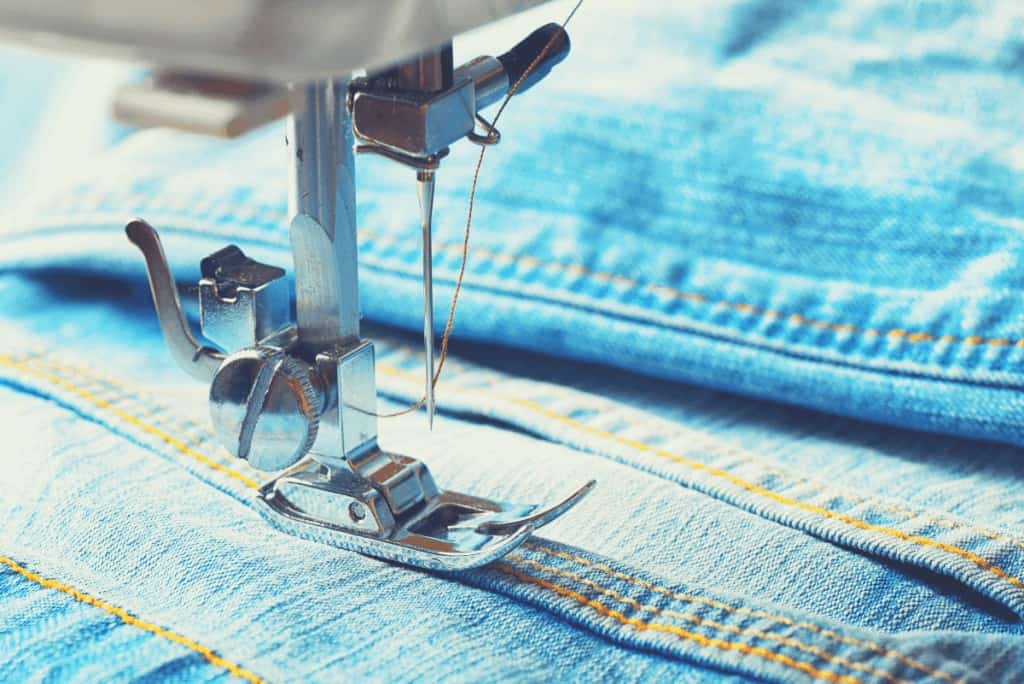When it comes to sewing denim, not all machines are created equal. It is worth finding a sewing machine that’s capable of regularly handling heavy material. So, whether you want the ability to create unique denim designs or hem jeans, you’ll want to be sure you’ve got the right machine for the job. This is our review of the best sewing machines for denim – we hope it’s helpful!
Features to Look for in a Sewing Machine for Denim
In an ideal world, any sewing machine by a reputable company should be able to sew a variety of fabrics. Most devices can sew light to medium-weight fabrics without a problem. When you start trying to sew multiple layers of fabric or heavy material, though, it is not uncommon to run into issues. So, there are some key features you should look for to make sure your machine is capable of sewing denim.
A High-Quality, Powerful Motor is Essential
Using a machine with a high power motor is crucial when you are working with denim. You want a powerful motor with metal gears so it can drive the needle through the fabric. Using a quality motor will ensure that you do not damage your machine when you work with thick materials.
High Presser Foot Lift
The ability to raise your presser foot is critical. You have to be able to fit the fabric under the presser foot. So, you want to look for a machine with this feature. If you try to use a machine with a presser foot that does not lift, the material will not fit under it, and your sewing machine will not feed the fabric through.
Leveling Presser Foot
You want your presser foot to be able to glide over any fabric you put through your machine. However, without the leveling feature, thick material will get caught on the foot. The leveling pressor foot remedies this problem allowing material of different thicknesses of material to pass easily under the foot. When you are working with denim, seams will differ more in thickness, so this is an essential accessory.
Here’s a video showing how to use a Leveling Pressor Foot:
Tips for Using Your Machine to Sew Denim
In addition to using the proper machine, you need to learn how to manipulate your sewing machine to get the best results. This usually takes a process of trial and error, and overtime, you learn what works best for your machine. However, we put together a few tips to help you get better results from the start.
Use Thicker Thread
If you want your project to last, you need to use thread made to hold thicker fabrics. Top-stitching thread should hold denim seams. You can use regular thread on your bobbin if you use a top-stitching thread on your spool.
Adjust the Tension Setting
Adjusting the tension setting allows your sewing machine to feed the material more effectively through the automatic feed. If you set the tension too high, the fabric may get stuck under the presser foot.
Use a Wider Stitch
Heavier fabrics do not require as tight of a stitch. You want the stitch to be a bit wider, but not too wide. So, around 3mm is ideal. If your stitch is too broad, your hems will not be as secure. If you get the stitches too close together, the fabric can bulge around the stitches.
Use the Proper Needle
It is crucial that you use the right needle when you are working with thicker fabric. Size 100/16 or 120/18 are thicker needles that have a sharper tip. They are ideal for denim fabrics. You should also use a new needle every time you start a new project for the best results. If you do not use the correct needle, it can result in bent or broken needles and even throw the timing off on your machine.
Take it Slow
When you work with heavy fabrics, it is essential to take things slow. Typically, the thicker the material, the more expensive it is. You do not want to waste expensive fabric by trying to rush through the job. Furthermore, the faster you sew, the more likely your machine is to jam or produce low-quality stitches. Going slower will allow you to correct issues if they arise. For example, if your material gets stuck, you can raise the presser foot to accommodate the fabric to avoid over-stitching.
Test Your Settings on Scrap Material
We suggest testing your settings on a piece of scrap material before you begin sewing your project. Make sure if you are folding the material, or if you will have to sew through different levels of fabric, that you do this with the test fabric first. Doing this can save you a lot of time and money by helping you adjust your settings before getting started.
Our Reviews of the Best Sewing Machine for Denim
Now that you know what you need to get great results when working with denim, you need to know which sewing machine is the best for the job. We reviewed five machines, so we could help you make an informed decision. Take a look at what we found.
Editor’s Pick – Janome HD3000
We love working with the Janome HD3000 for denim projects. The machine is a good weight at 18.7 pounds. It is not too heavy to move, but it has enough weight to stay put while working on it. The machine also features a metal frame and gears, so you can work with several layers of denim without worrying that you are wearing out the components.
The Janome HD3000 invokes confidence because it is so easy to use. The machine features precision timing which helps to eliminate skipped stitches, and prevents the needle from hitting the presser foot causing broken or bent needles. The design is perfect for all types of fabric. We love that this machine is affordable but offers plenty of features you need to work with denim fabric.
Pros:
- The metal gears are reliable
- Features a free arm
- It comes with a hardcover case for storage
Cons:
- There is no automatic thread cutting system
- The machine is loud at times
- The worktable is small
Best for Speed – JUKI TL-2010Q
The Juki TL-2010Q is a high-quality sewing machine with an aluminum die-cast construction. It has several industrial features, including a variable speed slider and a sub-tension system. The advanced tension system keeps your heavy thread from quivering while working, which helps you get more precise results. There is also an automatic thread cutting system, which is valuable when working with materials that are more difficult to manoeuvre.
The work area is large, and you can raise the presser foot to 12mm, which makes it perfect for working with denim and other heavy materials. While some machines make denim projects challenging, we really enjoyed working with heavy fabrics using the Juki TL-2010Q sewing machine.
Pros:
- It features an automatic thread cutting system
- Made from high-quality components
- It has a 12mm max presser foot height
Cons:
- It is heavier than most sewing machines
- There is only one built-in stitch
- The light is dim
Best for Budget – Singer 4432
The Singer 4432 is an excellent machine for hobbyists who want the ability to work with denim and other heavy materials without having to spend a lot on an expensive machine. The Singer 4432 is only 14 pounds, but it features an internal metal casing to handle heavy jobs with ease.
The metal construction also helps to prevent damage to the machine when you are working with denim or multiple layers of fabric. It also features 32 built-in stitches and an automatic buttonhole feature and foot, which is important for denim projects. We like that this machine comes with extra bobbins, needles, and presser feet to help you get started.
Pros:
- Affordable heavy duty sewing machine
- There are 32 built-in stitches
- Capable of sewing 1,100 stitches per minute
Cons:
- There is no built-in light
- The automatic threader is challenging to use
- It occasionally skips stitches
Best All-Rounder – Singer 4452
The Singer 4452 is part of Singer’s Heavy Duty line of machines. It is affordable, and it has several features to help you achieve quality results when working with heavy fabrics. It comes with a walking foot to help feed thick fabrics with ease, a non-stick foot for use with leather and vinyl, and a 5-pack of heavy duty size 16 needles, as well as nearly a dozen other accessories for a variety of projects.
Setting up and using the Singer 4452 is straightforward even for beginners. So, this is an excellent option for anyone looking to experiment with a variety of sewing projects.
Pros:
- 32 built-in stitches
- Comes with five heavy duty needles
- Metal construction
Cons:
- There is no built-in light
- The needle threader is challenging to use
- Thread can tangle in the bobbin compartment
Best Computerized – Brother Project Runway CS5055PRW
The Brother Project Runway CS5055PRW is a limited edition machine designed for people who want to create fashion-forward projects. It gives you the ability to work with many different materials and create many unique designs. It has a feed system and walking foot that makes it easy to work with denim.
However, it is not the easiest machine to set. If you are working with denim only and can leave the settings alone, you are likely to have better results. If you need to change the tension and stitch length settings frequently, you may run into issues with thread tangling and fabric getting stuck in the bobbin compartment.
Pros:
- Includes 50 built-in stitches
- The computerized machine makes changing stitches easy
- Includes a walking foot
Cons:
- There is no backlight on the digital stitch selection screen
- The thread spool holder location is awkward
- There is no automatic thread cutter
Editor’s Pick for the Best Sewing Machine for Denim
After trying these five machines, we believe the Janome HD3000 is the best sewing machine overall for denim, and it gives the best value for your investment. It is considerably less expensive than other comparable devices, and it has a durable construction with metal components and gears. With all of the great features, we are confident you will enjoy sewing unique denim designs on your Janome HD3000 for years.


